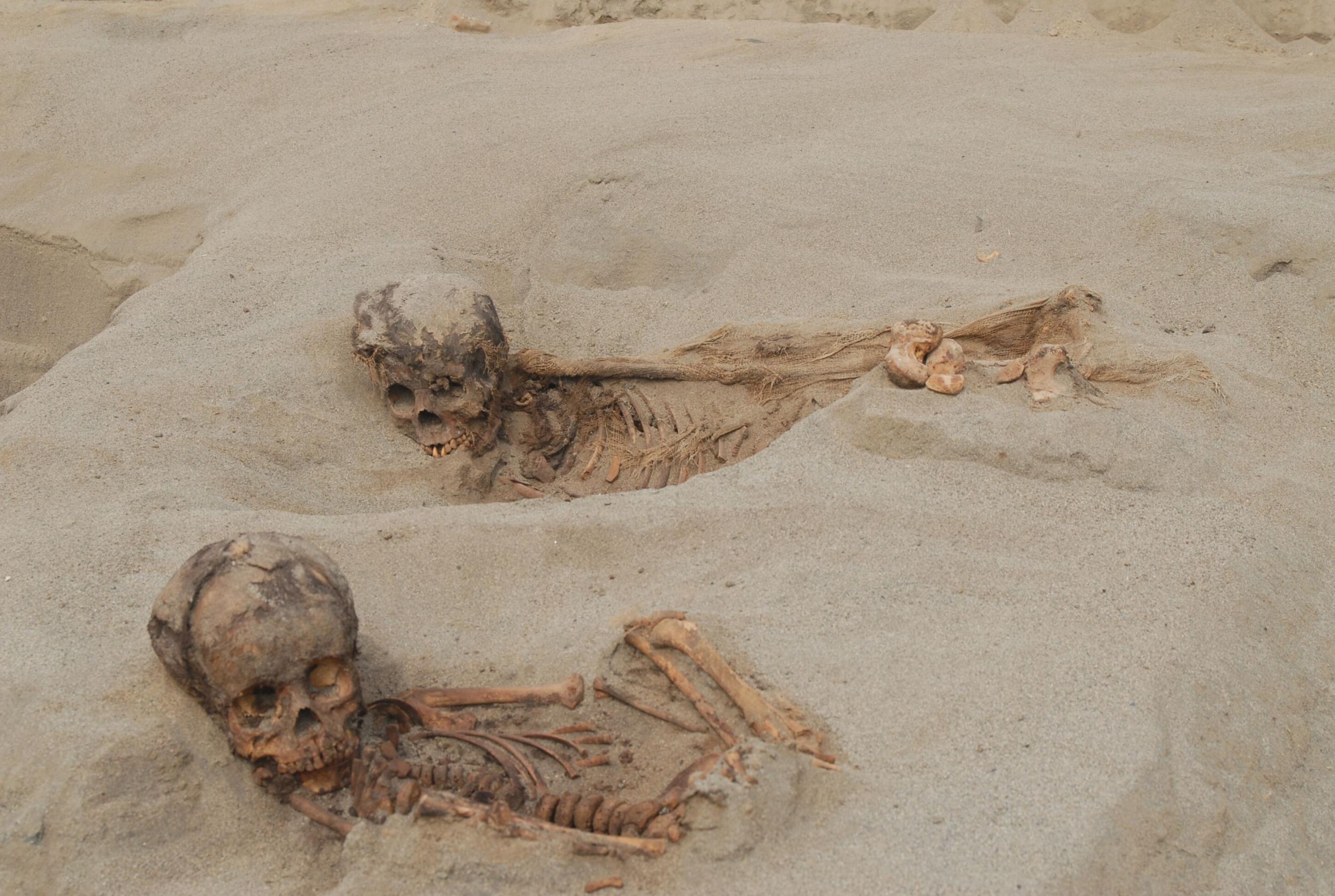Skeletons of more than 100 children found sacrificed at ritual site in Peru
'We had not seen anything like this before'

Your support helps us to tell the story
From reproductive rights to climate change to Big Tech, The Independent is on the ground when the story is developing. Whether it's investigating the financials of Elon Musk's pro-Trump PAC or producing our latest documentary, 'The A Word', which shines a light on the American women fighting for reproductive rights, we know how important it is to parse out the facts from the messaging.
At such a critical moment in US history, we need reporters on the ground. Your donation allows us to keep sending journalists to speak to both sides of the story.
The Independent is trusted by Americans across the entire political spectrum. And unlike many other quality news outlets, we choose not to lock Americans out of our reporting and analysis with paywalls. We believe quality journalism should be available to everyone, paid for by those who can afford it.
Your support makes all the difference.A mass sacrifice site containing the remains of more than 100 children has been unearthed in Peru.
Dating back to the 15th century, archaeologists have identified the remains as part of the largest mass sacrifice of its kind ever seen in the Americas.
The bodies, which belonged to children as young as five, bore evidence of having their hearts ritualistically removed.
Alongside the bones of 140 children were those belonging to more than 200 young llamas, all spread across an area spanning around 700 square metres.
The Huanchaquito-Las Llamas site was part of the Chimu state, which was the dominant society along the coast of Peru during the 15th century.
These bodies were unearthed over the course of five years, and scientists have dated them to the height of the Chimu culture in 1450.
A thick layer of mud covering the remains indicated that the killing came after a large rain storm or flood, which may have been what inspired these ancient Peruvians to perform such a dramatic act.
Such human sacrifices are known from a variety of cultures, and are normally performed as part of funeral or otherwise spiritual rituals, but the Chimu discovery was unprecedented.
“This archaeological discovery was a surprise to all of us – we had not seen anything like this before,” said Dr John Verano, an anthropologist at Tulane University and one of the study’s authors.
“There was no suggestion from ethno-historic sources or historic accounts of child or camelid sacrifices being made on such a scale in northern coastal Peru."
As the team removed the bones from the sediment, they realised there were cut marks along the children’s sternums and displaced ribs, suggesting they had their chests cut open to have organs removed.
The authors of the study, published in the journal PLOS ONE, noted the sacrifice of so many would have been an enormous investment of resources for this ancient culture and must therefore have had enormous significance.
“We were fortunate to be able to completely excavate the site and to have a multidisciplinary field and laboratory team to do the excavation and preliminary analysis of the material,” said Dr Verano.
“This site opens a new chapter on the practice of child sacrifice in the ancient world.”
Subscribe to Independent Premium to bookmark this article
Want to bookmark your favourite articles and stories to read or reference later? Start your Independent Premium subscription today.
Join our commenting forum
Join thought-provoking conversations, follow other Independent readers and see their replies
Comments